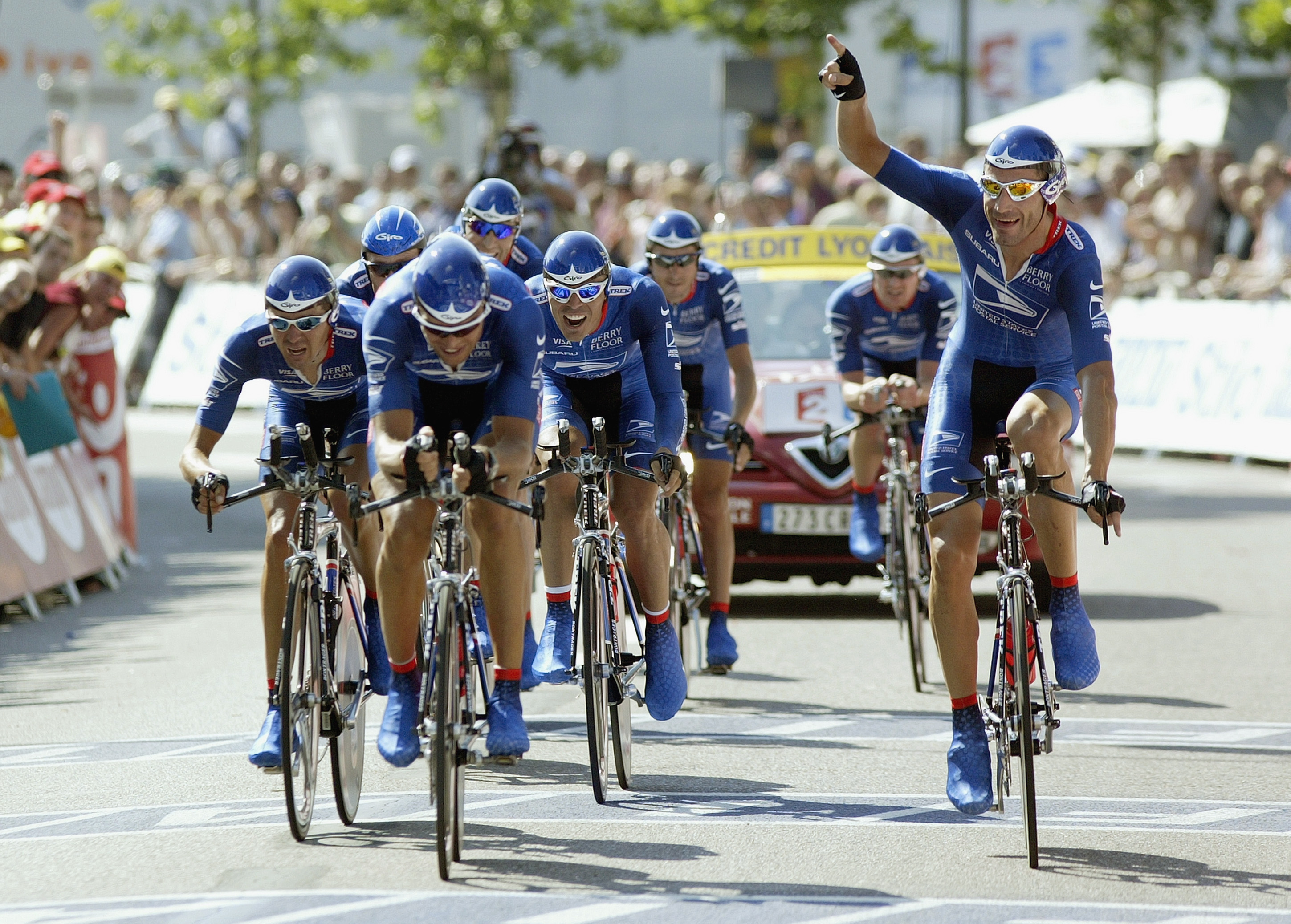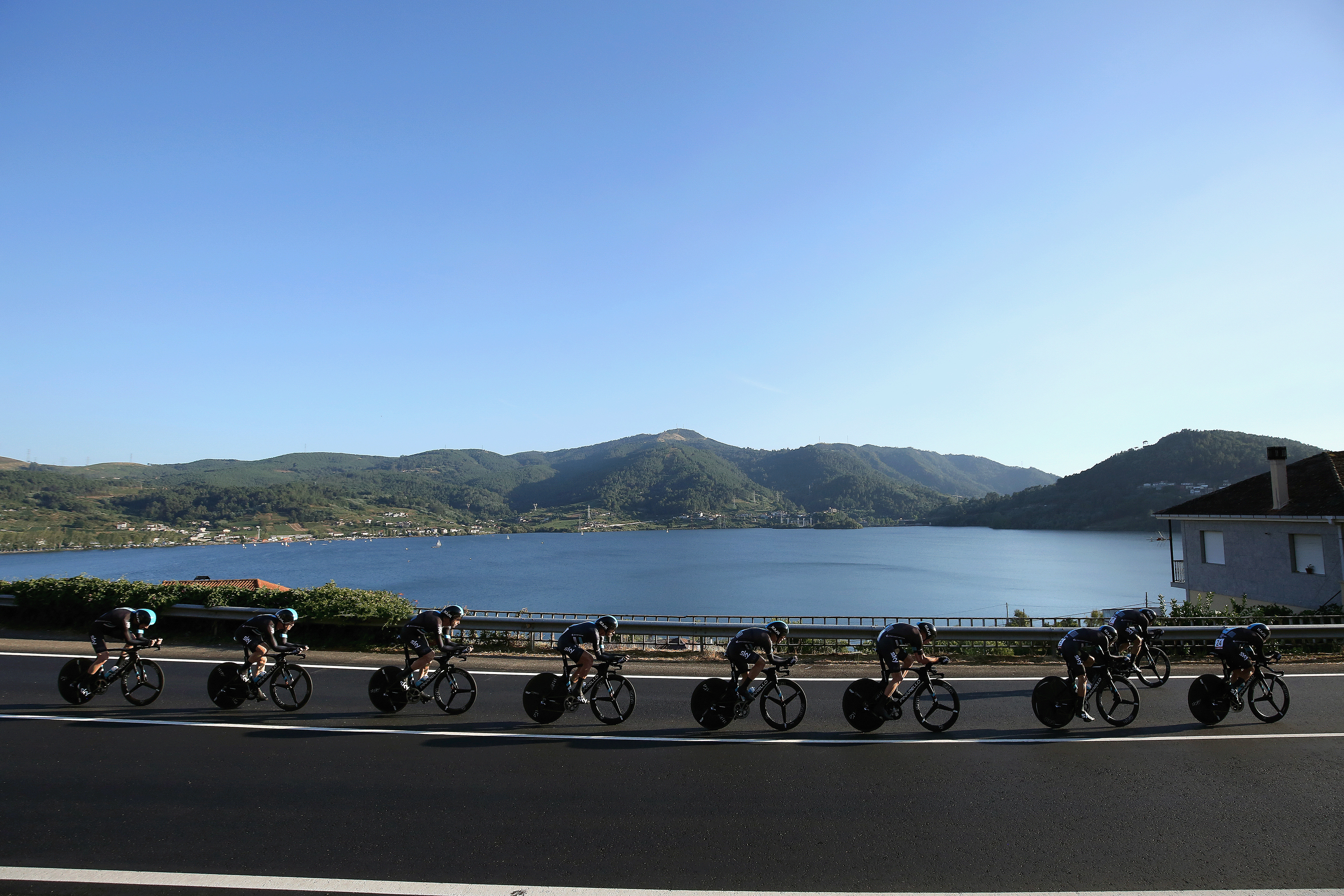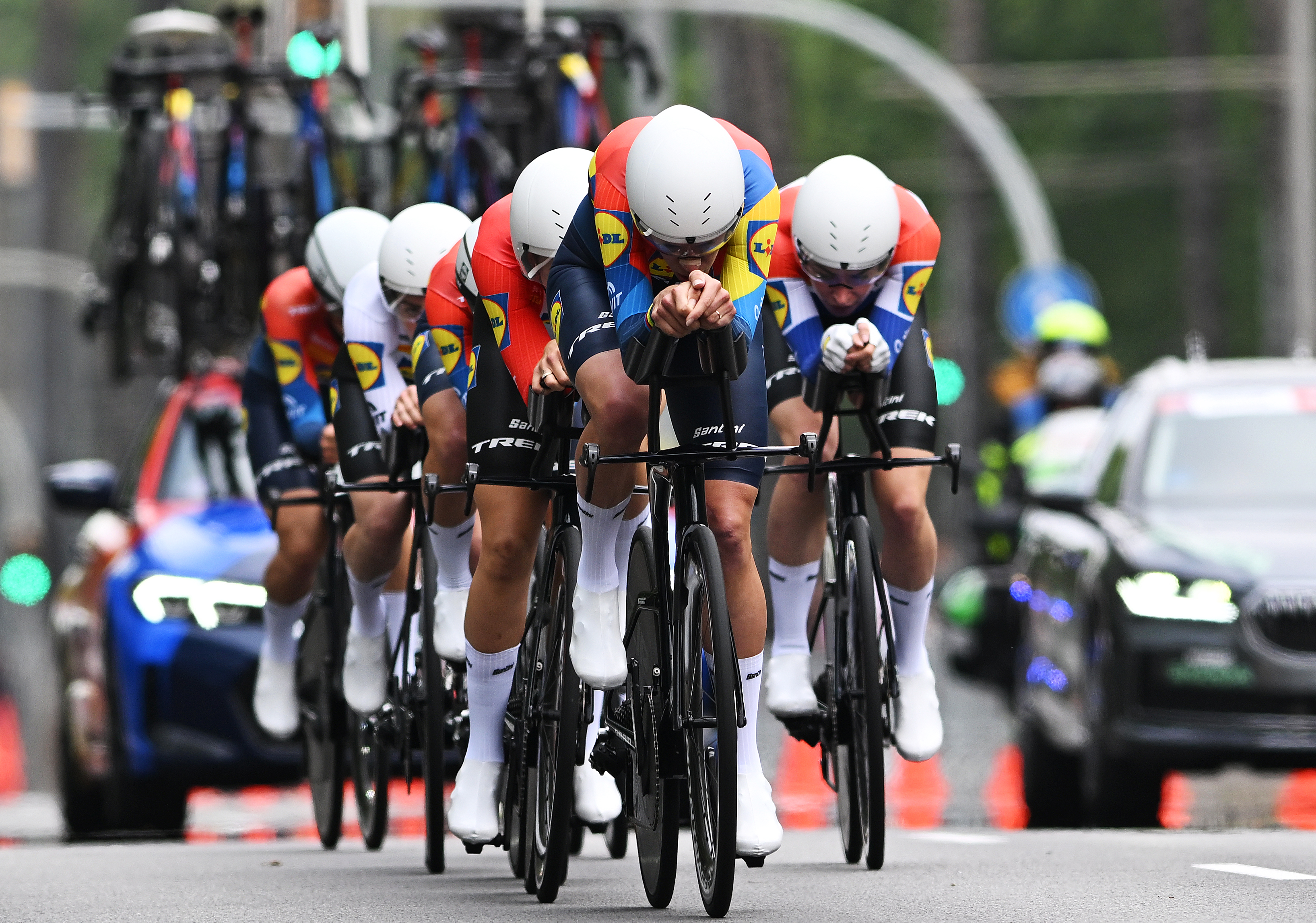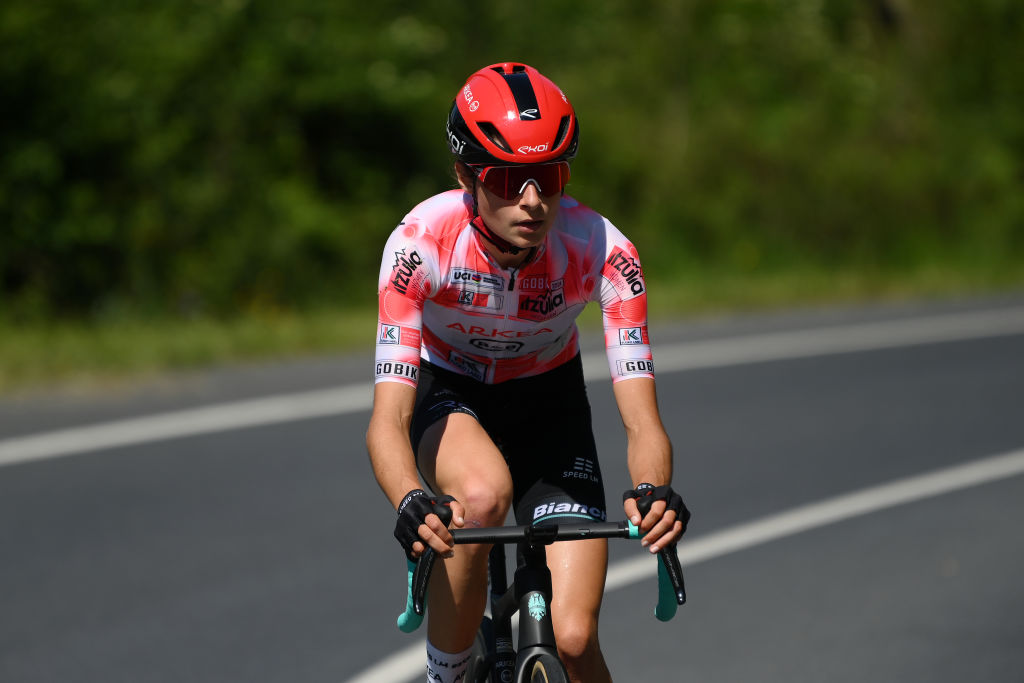The Grand Tour team time trial – A once dying discipline of innovation, strategy and execution back on the rise
Ongoing Vuelta a España features 24.1km team race against the clock on stage 5 in Figueres, with TTT returning to Tour de France for 2026

Team time trials were once a common feature of Grand Tours in cycling, with the format offering a chance to see great innovation in action and the best teams to work seamlessly for victory, but they've become some of a dying art in recent years.
That is, except for at the Vuelta a España, with three of the four last editions containing a team race against the clock in its early phase and much of the 2010s seeing team time trials continue to feature in Spain, while they fell out of fashion at the Tour de France into the current decade. The same is true of the Giro d'Italia, with no TTT in the past 10 editions, having featured in the 10 prior editions between 2006 and 2015.
Often criticised for their unfairness, team time trials have long been said to benefit the wealthier teams, with investment into aerodynamics, science and technology – alongside being able to commit training time to the TTT – playing into the hands of the biggest teams.
So they all but died notably at the Tour de France, but alongside the continuation of their use at the Vuelta, in the men's and women's Grand Tour in Spain, there will be a return to the forgotten discipline at next year's Tour in Barcelona on stage 1 – the first since 2019.
In practice, they can be a great spectacle, and a photographer's dream, with the rotation on the front and smooth tucking back into the line giving the most well-oiled TTT machines the chance to show off poetry in motion as they race to set the fastest time in the finish.
Vital to success is not only the individual time trialling ability of the riders, but their communication during the effort, technique to maximise efficiency, and ability to execute under pressure, with months of planning sometimes going into finding TTT perfection.
Times used to be taken on the fourth rider of a team crossing the finish, meaning it was paramount to keep at least half of the team together to the line in Grand Tours; however, this has changed in recent years.
The latest race content, interviews, features, reviews and expert buying guides, direct to your inbox!
With the TTT being reintroduced in Paris-Nice in 2023, a new timing format means that each rider will now get their individual time for crossing the finish line, prompting teams to completely empty their trains and form somewhat of a long lead-out for their GC leader to go all-out alone to the finish. This is the timing format which will be used at the Tour de France TTT in Barcelona in 2026.

The next team race against the clock to feature in a Grand Tour, though, will be at the ongoing Vuelta a España on stage 5, with a 24.1km flat stage set to see the teams face off in Figueres.
It makes up for a much smaller percentage of the race's overall distance compared to how much TTTs used to play a role, especially for the general classification, but it will nonetheless be vital to execute in order to make minor gains or stay in contact overall.
The criticisms, as already stated, will be the same as there were back in the 1950s, but improvements in professionalism and innovation throughout the whole peloton could see the gap between the richest and the lowest-budget teams narrow – though the Visma-Lease a Bikes and UAE Team Emirates-XRGs of the world are still expected to be the front-runners.
A history of the team time trial in Grand Tours
Team time trials in Grand Tours date back even to the 1920s, when the iconic Tour de France director Henri Desgrange decided to radically change the format of the entire route – making 16 of the 24 stages team races against the clock.
It was in an attempt to make the Tour more of a spectacle, to avoid bunch finishes and have the top riders incentivised to ride to their maximum each day. Unsurprisingly, this grand redesign didn't catch on, and after two more Tours with several TTTs, they remained in relative anonymity until well after the Second World War, with the individual time trial being introduced in 1934 and featuring more frequently.
In this gap, team time trials were introduced to the other two Grand Tours: at the Giro in 1937, when the Legnano team featuring eventual overall winner Gino Bartali took victory, and at the Vuelta in 1946, when podium finisher Jan Lambrichs won as part of a strong Netherlands team in the TTT.
In 1954, with Jacques Goddet now at the helm as race director, the team time trial returned to the Tour. But it was different to those early experiments from decades gone by, with the format similar to what we know today, with the teams' times being taken in pursuit of victory, not individuals, and the length only at 10.1km, as opposed to the 100km+ TTT courses of the past.
With the discipline back in the game, it took some time before it became a full mainstay on subsequent Tour routes, but from 1962 until 1995, there was a team time trial in every edition, often as part of a double-stage day.
The 1980 and 1981 editions even saw two team time trials featuring on the route, with 1980 Tour winner Joop Zoetemelk's Dutch team, TI-Raleigh-Creda, the dominant force and winner of all four in those years.
Contrastingly, at the Giro, team time trials took almost 20 years between their first and second appearances, in 1954, and disappeared completely for two decades in the 60s and 70s. The 80s saw several, before another long period without TTTs in Italy, until the 21st century arrived and the 2006 edition saw them return in Piacenza, with overall winner Ivan Basso's CSC Pro Team taking victory by one second.

In Spain, the Vuelta, too, saw a mixed amount of TTTs featured through the 20th century, with a notable re-inclusion of the discipline arriving in 2002 after 10 years out of the Tour of Spain. On that occasion, it was the well-oiled then ONCE-Eroski squad, led by Joseba Beloki, who took victory in Valencia, which they would repeat in the TTT a year later in Gijón.
The early 2000s brought the team time trial back into focus at the Tour during the Lance Armstrong years, with his US Postal Service and then Discovery Channel teams becoming the dominant force in the discipline.
The Giro did the opposite, with the late 2000s seeing the rise of the TTT inclusion at the Italian Grand Tour, which carried on into the 2010s and saw several different winners, notably Liquigas, HTC-Highroad and Team Sky. After Orica-GreenEdge won the TTT in Sanremo at the 2015 Giro, the discipline has not been seen at the Giro ever since.
It's at the Vuelta where they've remained the most common, with 16 of the editions since 2000 featuring a team time trial, with again Team Sky and BMC being among the teams to have won one in Spain. Most recently, in 2022 and 2023, the TTT has remained as part of the Grand Partida, with Jumbo-Visma winning in Utrecht, and DSM-Firmenich winning a controversial TTT in dark, wet and treacherous conditions in Barcelona at the 2023 race.
With the current Vuelta about to feature the team time trial once again, along with next year's Tour de France, the discipline will once again find itself a focus for team coaches and strategists, to ensure they maximise on the all-out team effort in aid of their GC leader's ambitions. The Giro doesn't appear to be following suit as it stands, but if the one in Barcelona at the Tour is a success under the new timing format, expect to see TTTs possibly return on a greater scale to men's Grand Tours.

Team time trials in women's Grand Tours
When it comes to the women's side of racing, the current climate shows similar trends, with the former Challenge by La Vuelta and now La Vuelta Femenina making a team time trial commonplace on the route – ever since 2022. Lidl-Trek have won three of the four, but lost out to Visma-Lease a Bike in 2023.
The revived Tour de France Femmes is yet to feature a TTT, and has barely seen much action against the clock at all since its inaugural edition in 2022. Previous iterations of the women's Tour de France, including the one-off 1955 event won by Millie Robinson, and various versions of the Tour de France Féminin in the 80s and 90s, also didn't feature team time trials, with prologues and individual races against the clock favoured instead.
Women's racing at the Giro has seen a TTT as recently as 2021, when the then Trek-Segafredo team again proved to be the top team and Ruth Edwards (née Winder) took the pink jersey. The Giro was no stranger to team time trials by that either, with the four editions preceding 2021 also featuring the discipline. TTT action at the women's Giro kicked off way back in the 2004 edition, when the Let's Go Finland team took victory.


James Moultrie is a gold-standard NCTJ journalist who joined Cyclingnews as a News Writer in 2023 after originally contributing as a freelancer for eight months, during which time he also wrote for Eurosport, Rouleur and Cycling Weekly. Prior to joining the team he reported on races such as Paris-Roubaix and the Giro d’Italia Donne for Eurosport and has interviewed some of the sport’s top riders in Chloé Dygert, Lizzie Deignan and Wout van Aert. Outside of cycling, he spends the majority of his time watching other sports – rugby, football, cricket, and American Football to name a few.
You must confirm your public display name before commenting
Please logout and then login again, you will then be prompted to enter your display name.
